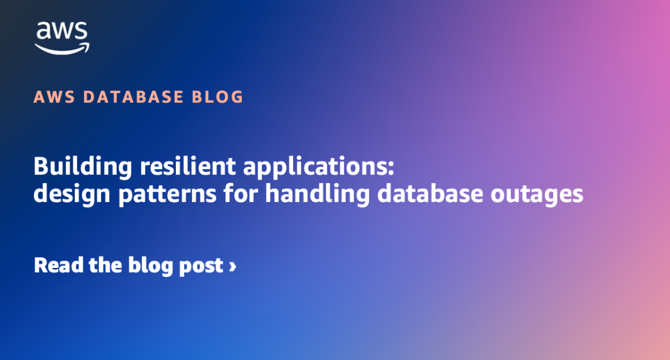Amazon
2w
177

Image Credit: Amazon
Building resilient applications: design patterns for handling database outages
- Database outages, whether planned or unexpected, are common challenges for applications, necessitating resilient design patterns for smooth operation.
- Design patterns such as Queue-based load leveling help in handling database outages by introducing a message queue to manage database operations.
- The Cache-aside pattern improves database resilience and application performance by utilizing a cache for accessing data.
- Command Query Responsibility Segregation (CQRS) treats read and write operations separately to enhance database resilience during failures.
- The Circuit breaker pattern acts as a safety switch to prevent cascading failures during database outages.
- The Retry with backoff pattern introduces smart retry logic for transient issues, gradually increasing delays between attempts to avoid overwhelming the system.
- The Bulkhead pattern isolates application resources into separate pools to prevent failures in one area from affecting the entire application.
- Combining these design patterns, like CQRS, Queue-based load leveling, Cache-aside, and Retry with backoff, can enhance application resilience.
- Implementations of these patterns using AWS services like Amazon SQS, ElastiCache, Aurora, and others help in improving system robustness.
- The authors suggest reviewing the AWS Well-Architected Framework's Reliability Pillar for detailed best practices on building reliable systems.
Read Full Article
10 Likes
For uninterrupted reading, download the app